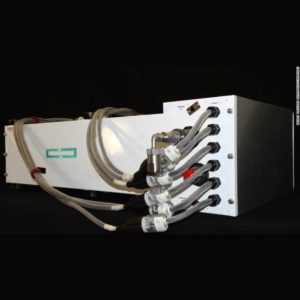
Dr. Eng Lim Goh is CTO HPC & AI at HPE
In this video from SC17 in Denver, Dr. Eng Lim Goh describes the spaceborne supercomputer that HPE built for NASA.
On August 14, SpaceX launched a Dragon Spacecraft from Kennedy Space Center to the International Space Station. Part of the payload included a custom-built Spaceborne Computer, part of a year-long experiment conducted by HPE and NASA to run a high performance commercial off-the-shelf (COTS) computer system in space, which has never been done before. The goal is for the system to operate seamlessly in the harsh conditions of space for one year – roughly the amount of time it will take to travel to Mars.”
The research objectives of the Spaceborne Computer include a year-long experiment of operating high performance commercial off-the-shelf (COTS) computer systems on the ISS with its changing radiation climate. During high radiation events, the electrical power consumption and, therefore, the operating speeds of the computer systems are lowered in an attempt to determine if such systems can still operate correctly. Additionally, this is a long duration experiment, studying the practicality of running and managing COTS high performance computer systems in orbit from several months to one year.

Spaceborne supercomputer from HPE
In summary, the objectives are:
- Run compute and data intensive applications in a changing radiation climate,
- Monitor power consumption and dynamically tune the power consumed, and
- Determine effects of solar radiation on the systems while running.
In order to achieve these objectives, Hewlett Packard Enterprise (HPE) proposes a total of four identical high performance COTS computer systems. Two of the systems are installed aboard the ISS in a side-by-side EXPRESS locker within an ISS EXPRESS Rack. These two systems with the required networking are integrated at the HPE facility and turned over to the ISS Cargo Mission Contract (CMC) as required.




